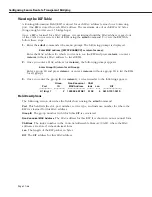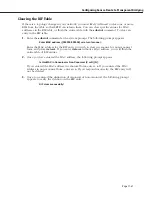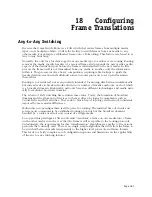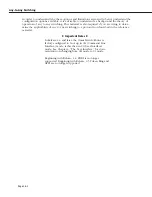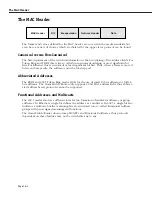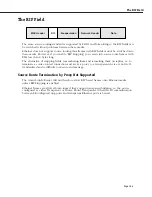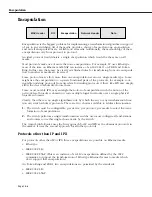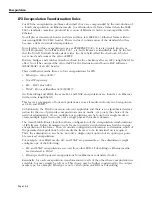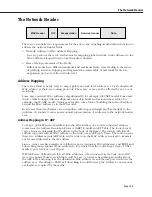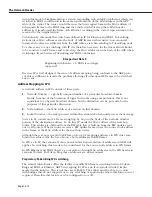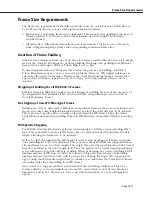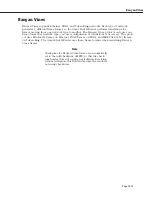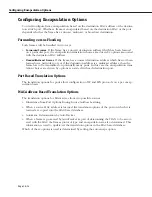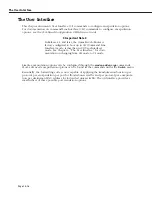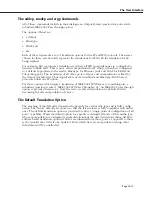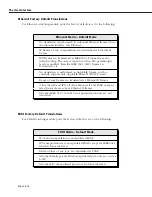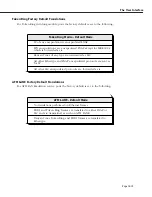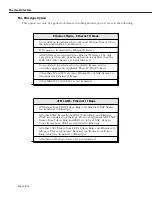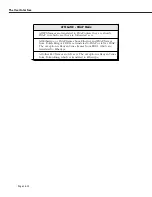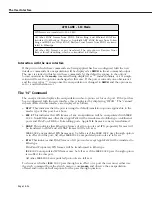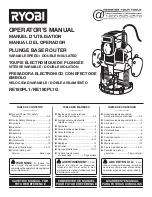
The Network Header
Page 18-9
The Network Header
There are essentially two requirements for the any to any switching transformation function to
address the network header fields:
• Network Address to MAC Address Mapping
In every protocol there is a mechanism for mapping global network wide addresses to the
MAC addresses required in the local broadcast domain.
• Frame Size Requirements of the Media
Different media have different minimum and maximum frame sizes leading to the issues
of padding insertion/stripping and fragmentation/reassembly or maximum frame size
negotiation protocols at the network level.
Address Mapping
There are almost as many ways to map a global network level address to a local subnetwork
MAC address as there are routing protocols. These may or may not be affected by any to any
switching.
Some may construct MAC addresses algorithmically, for example, DECNET model. Some may
involve table lookups with an additional protocol to build and maintain these tables, for
example, the IP/ARP model. Others may involve some form of building the network address
around the MAC address as in the IPX model.
In all cases these mechanisms are susceptible, without good design and forethought, to the
problem of canonical versus non-canonical representation of addresses in the network header
area.
Address Mapping in IP: ARP
To map a 32-bit IP network address into the MAC address of a locally connected station a
router uses the Address Resolution Protocol (ARP) to build an ARP Table. The router broad-
casts a request containing the IP address in the body of the frame. The station with that IP
address responds with its MAC address
in the body
of an ARP reply frame. The router inserts
these two addresses in its ARP table and can then use the MAC address received to transmit
any frames addressed to that IP address.
Since a router can have interfaces to Ethernet ports (canonical MAC addresses) and FDDI and
Token Ring (non-canonical MAC addresses), it is crucial that the router keeps track of what
media type it receives on each port.
If IP ARP were defined such that all MAC addresses,
when conveyed in the body of an ARP
,
were in canonical format, switching would be easy. A router, when taking an address from
the ARP table and using it as the destination MAC address on an Ethernet port would use the
address as is. If sending to FDDI or Token Ring it would bit swap the address to non-canoni-
cal format as required by the media.
MAC Header
RIF
Encapsulation
Network Header
Data
Summary of Contents for Omni Switch/Router
Page 1: ...Part No 060166 10 Rev C March 2005 Omni Switch Router User Manual Release 4 5 www alcatel com ...
Page 4: ...page iv ...
Page 110: ...WAN Modules Page 3 40 ...
Page 156: ...UI Table Filtering Using Search and Filter Commands Page 4 46 ...
Page 164: ...Using ZMODEM Page 5 8 ...
Page 186: ...Displaying and Setting the Swap State Page 6 22 ...
Page 202: ...Creating a New File System Page 7 16 ...
Page 270: ...Displaying Secure Access Entries in the MPM Log Page 10 14 ...
Page 430: ...OmniChannel Page 15 16 ...
Page 496: ...Configuring Source Route to Transparent Bridging Page 17 48 ...
Page 542: ...Dissimilar LAN Switching Capabilities Page 18 46 ...
Page 646: ...Application Example DHCP Policies Page 20 30 ...
Page 660: ...GMAP Page 21 14 ...
Page 710: ...Viewing the Virtual Interface of Multicast VLANs Page 23 16 ...
Page 722: ...Application Example 5 Page 24 12 ...
Page 788: ...Viewing UDP Relay Statistics Page 26 24 ...
Page 872: ...The WAN Port Software Menu Page 28 46 ...
Page 960: ...Deleting a PPP Entity Page 30 22 ...
Page 978: ...Displaying Link Status Page 31 18 ...
Page 988: ...Displaying ISDN Configuration Entry Status Page 32 10 ...
Page 1024: ...Backup Services Commands Page 34 14 ...
Page 1062: ...Diagnostic Test Cable Schematics Page 36 24 ...
Page 1072: ...Configuring a Switch with an MPX Page A 10 ...
Page 1086: ...Page B 14 ...
Page 1100: ...Page I 14 Index ...




